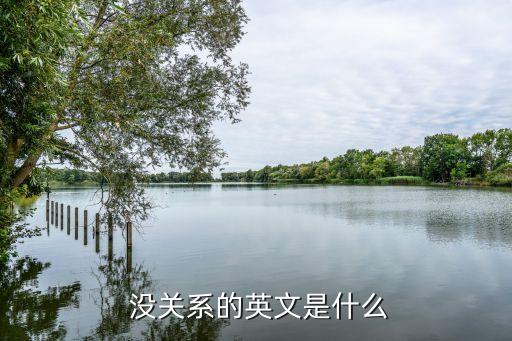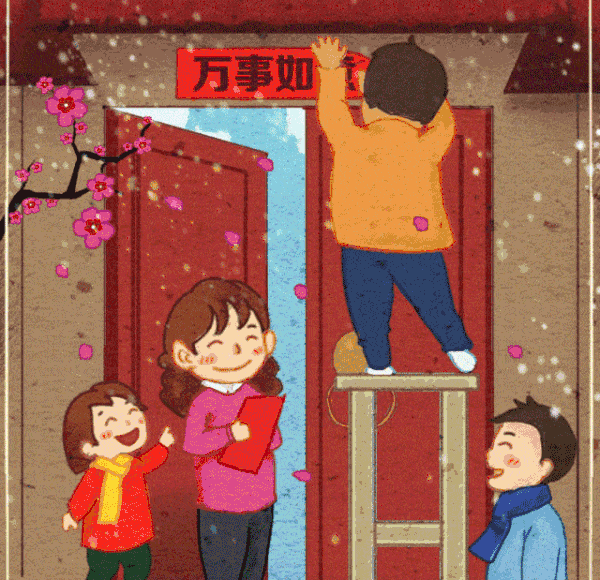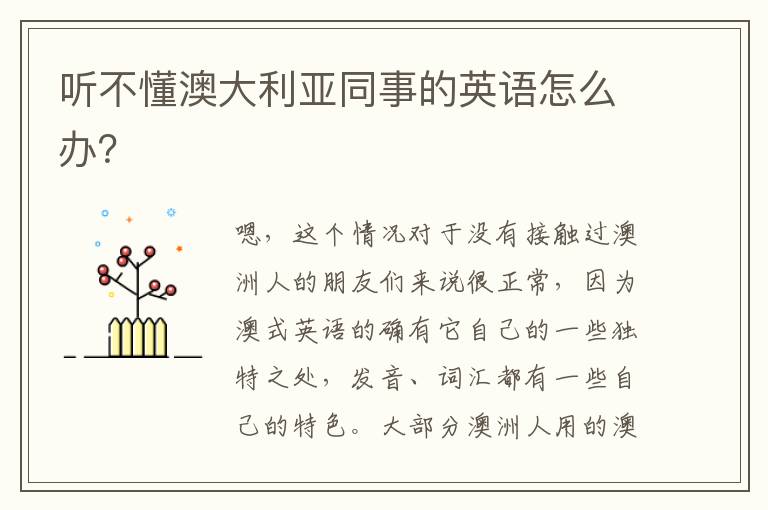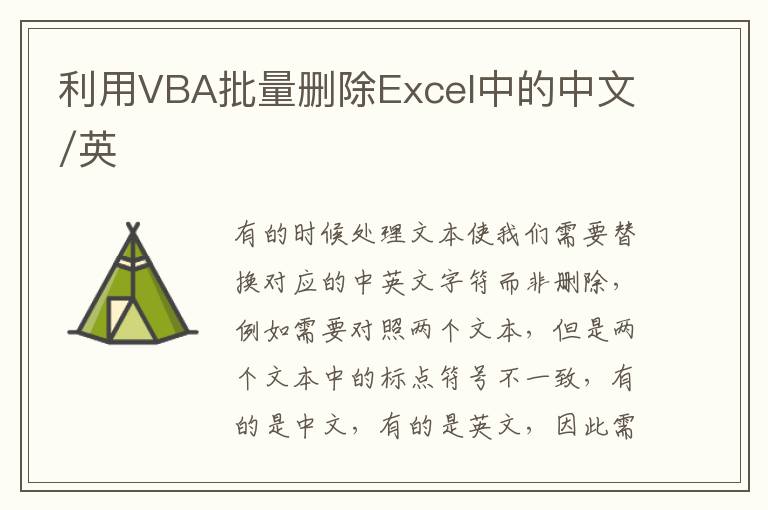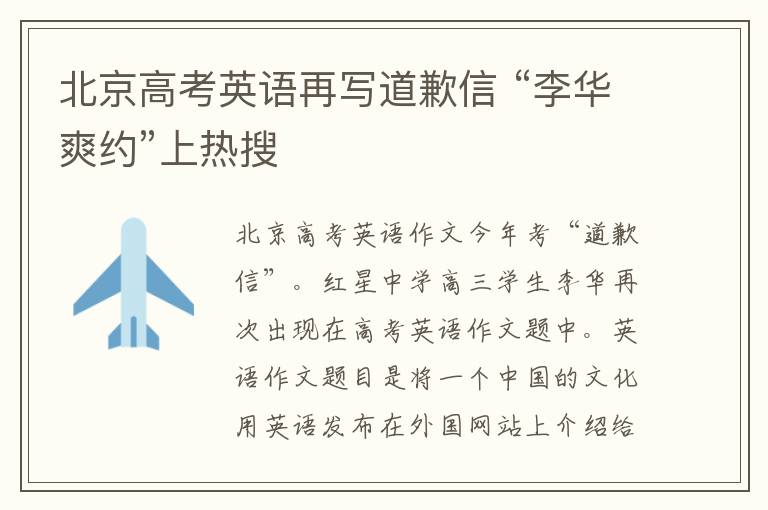2024版高考英语外研版一轮复习跟踪检测:选修8 Module2《The Renaissance》(含解析)

选修八
Module 2
“阅读+七选五+完形”组合练——练题型
(限时:35分钟)
.阅读理解
(2024·衡水一中高三模拟)Michelangelo Buonarroti was born in Caprese, Italy on March 6,1475.He was still young when his family moved to Florence where Michelangelo grew up. His mother died when he was only six years old. Growing up in Florence during the Italian Renaissance was the perfect stage of young Michelangelo's life. Even as a child all he wanted to do was painting and to be an artist.
At the age of thirteen, he went to learn from Domenico Ghirlandaio, who was not only a painter but also an artist. Michelangelo's talents became apparent as he worked for Domenico. Within a year or so Domenico sent him to the powerful Medici family to continue his training under the sculptor (雕刻家) Bertoldo di Geovanni. Michelangelo was able to work with some of the finest artists and philosophers of the time. During the next few years, Michelangelo produced many famous sculptures including Madonna of the Steps, Battle of the Centaurs and Bacchus.
In 1496 Michelangelo moved to Rome. A year later he was asked to make a sculpture called the Pieta. It would become one of the masterpieces of Renaissance art. Today this sculpture sits in St. Peter's Basilica in the Vatican. It is the only piece of art that Michelangelo signed.
Michelangelo's fame (名声) as a great artist began to grow. He returned to Florence and was asked to create a large statue of David. It took him a couple of years to finish the giant statue. The piece of marble (大理石) he began with was very tall and thin. Many people didn't think he could do much with it. He worked without letting anyone see it until it was finished. David became Michelangelo's most famous work of art. It is thirteen feet tall and is the largest statue made since Ancient Rome. It is considered by many experts in art to be a nearly perfect sculpture. Today the statue sits at the Academy of Fine Arts in Florence, Italy.
语篇解读:本文是一篇人物传记。米开朗基罗是意大利文艺复兴时期著名的艺术家,本文向我们介绍了一些他的生平事迹。
1.What can we learn about Michelangelo as a young child?
A.He lived a very hard life.
B.He showed great interest in art.
C.He wanted to go to Florence very much.
D.He didn't have much time to learn painting.
解析:选B 推理判断题。根据第一段的“Even as a child all he wanted to do was painting and to be an artist”可推断,米开朗基罗小时候就对艺术很感兴趣。
2.Michelangelo was sent to work under the sculptor Bertoldo di Geovanni most probably because________.
A.Michelangelo had lost his interest in painting
B.Domenico didn't think Michelangelo had a gift for
painting
C.Bertoldo di Geovanni offered to show Michelangelo
sculptures
D.Domenico wanted Michelangelo to make better use of his gift there
解析:选D 推理判断题。根据第二段的第二、第三句可推断,Domenico 是为了米开朗基罗能更好地利用自己的天赋才把他送到Bertoldo di Geovanni 那里去工作的。
3.What sculpture by Michelangelo will you see in St.Peter's Basilica?
A.Bacchus. B.The Pieta.
C.Madonna of the Steps.
D.Battle of the Centaurs.
解析:选B 细节理解题。根据第三段的第二至四句可知,应选B。
4.When Michelangelo began his work on creating a large statue of David,many people________.
A.couldn't wait to make fun of his work
B.thought he would finish it within months
C.knew it would be his most famous work of art
D.didn't think he would make good use of it
解析:选D 细节理解题。根据第四段的“Many people didn't think he could do much with it”可知,一开始很多人认为那块大理石不适合雕刻那个作品。
Ⅱ.阅读七选五
On Punctuality
A punctual man is in the habit of doing everything at the proper time and is never late in keeping an appointment.
The unpunctual man, on the other hand, never does what he has to do at the proper time. __1__ There is a proverb that says, “Time flies never to be recalled.” This is very true. __2__ Time is more valuable than material things. In fact, time is life itself, and the unpunctual man is forever wasting and mismanaging his own valuable assets as well as others'. The unpunctual man is always complaining that he finds no time to answer letters, or to return calls, or to keep appointments promptly. __3__ He knows that he can't get through his immense amount of work unless he faithfully keeps every appointment promptly and deals with every piece of work when it has to be attended to.
__4__ If a person is invited to a dinner and arrives later than expected, he keeps all the other guests and the host waiting him alone. This is great disrespect.
__5__ Imagine how it would be if those who are entrusted with important tasks failed to be at their proper place at the appointed time. A man who is known to be habitually unpunctual is never trusted by his friends or his fellow men. And the unpunctual man is a source of annoyance both to others and to himself.
A.Failure to be punctual is a sign of disrespect towards others.
B.A lost thing may be found again, but lost time can never be regained.
C.He is always in a hurry and in the end loses both his time and his good name.
D.Unpunctuality is very harmful when it comes to doing one's duty.
E.Of these the former are the majority.
F.But the man who really has a great deal to do is very careful of his time and seldom complains of want of it.
G.Broadly speaking, humans can be divided into two classes.
答案:1~5 CBFAD
Ⅲ.完形填空
(2024·南昌二模)It is a timeproven fact that smile is a language. It is a universal language __1__ by the people of every nation, and the commonest way to show our __2__ will perfectly without saying anything.
One day I was shopping in a small town in California. It was my misfortune to be __3__ by a clerk who seemed most __4__ and not at all concerned about my intended __5__. I bought nothing, and walked __6__ out of the store. My anger __7__ with each step. Outside, standing at the corner, was a young man in his early twenties. His expressive eyes met and held mine, and in the next instant a beautiful, amazing __8__ covered his face. I gave in __9__. The power of that shining smile __10__ away all my anger, and I found the muscles in my own face happily __11__. “Beautiful day, isn't it?” I said. Then, suddenly something inside me sent me turning
back. “I really owe you a __12__,” I said softly. His smile deepened, but he made no __13__ to answer. A Mexican woman nearby stepped __14__ and said, “Carlos can't speak English,” she volunteered. “Shall I tell him something?” At that moment I felt changed. Carlos' smile had made a big person of me. “Yes,” my __15__ was enthusiastic and sincere. “Tell him ‘Thank you!’” “Thank you?” The woman seemed slightly __16__. “Just tell him that,” I insisted. “Surely, he'll understand.”
What a smile! Although I have __17__ seen that young man again, I'll never forget the __18__ he taught me. From then on, I became smileconscious. I practice it __19__, anywhere and everywhere, with everybody. This action on my part would always draw a goodnatured smile __20__.
语篇解读:本文是一篇夹叙夹议文。一次不愉快的购物经历让“我”很愤怒,走出商场后,“我”遇到一位对“我”微笑的男子,他的微笑让“我”怒气全消,“我”由衷感激他的微笑。由此“我”领悟到:微笑是全世界通用的语言,它可以表达我们的善意。
1.A.learned B.known
C.understood
D.done
解析:选C 根据常识可知,世界各国的人们虽然语言不通用,但是他们都能理解微笑的含义,因此微笑是一种世界各国人们都明白的全球化语言。C项意为“理解,明白”。故答案选C。
2.A.warm
B.good
C.cold
D.fresh
解析:选B 根据常识可知,微笑表达的是善意,故此处应为“our good will”,意为“我们的善意”。B项意为“美好的”。故答案选B。
3.A.treated
B.entertained
C.greeted
D.served
解析:选D 根据上一句中“I was shopping”可知,“我”在购物,空格后面是“by a clerk”,由此可知,此处应指店员为“我”提供服务,因此用serve,意为“服务”。故答案选D。
4.A.amazed
B.warmhearted
C.unfriendly
D.confused
解析:选C 根据空格后的内容“and not at all concerned about ...”,再结合上文中的“misfortune”可知,此处应指这个店员很不友好。C项意为“不友好的”。故答案选C。
5.A.purchase
B.question
C.things
D.complaint
解析:选A 根据上文可知,“我”在商店购物,故此处应用“purchase”,指这个店员一点也不关心“我”想买什么东西。A项意为“购买”。故答案选A。
6.A.quietly
B.angrily
C.suddenly
D.recently
解析:选B 根据下一句中的“My anger”可知,本句句意为“我什么都没有买,很生气地走出商店”。B项意为“生气地”。故答案选B。
7.A.grew
B.changed
C.disappeared
D.went
解析:选A 根据空格后的“with each step”可知,此处指“我越走越生气”。因此此处应用“grow”来表示“愤怒在增强”。故答案选A。
8.A.expression
B.look
C.feeling
D.smile
解析:选D 根据下文中的“The power of that shining smile”和“His smile deepened”可知,此处应指当“我们”目光相遇时,他给了“我”一个美丽迷人的微笑。故答案选D。
9.A.proudly
B.happily
C.immediately
D.luckily
解析:选C 此处指“看到他迷人的微笑,我立刻就被折服了”。C项意为“立即”。故答案选C。
10.A.threw
B.went
C.put
D.drove
解析:选D 根据上一句中“I gave in”和下一分句中的“happily”可知,他的微笑赶走了“我”所有的愤怒。drive away意为“驱逐,赶走”。故答案选D。
11.A.flying
B.satisfying
C.responding
D.singing
解析:选C 句意:他灿烂的微笑赶走了我所有的愤怒,我发现自己脸上的肌肉在快乐地回应。此处指“我”被他的微笑折服,并不由自主地向他做出回应。C项意为“回应”。故答案选C。
12.A.gratitude
B.debt
C.smile
D.chance
解析:选A owe sb. sth.意为“欠某人某物”。根据下文中的“Tell him ‘Thank you!’”可知,此处应指作者认为那个年轻男子赶走了自己的愤怒,自己应该感谢他。A项意为“感激之情,感谢”。故答案选A。
13.A.idea
B.attempt
C.mind
D.energy
解析:选B 根据下文“Carlos can't speak English”可知,他不懂英语,不知道“我”说的是什么,所以没有打算回答。短语make an attempt to do sth. 意为“企图做某事,想做某事”,符合语境。故答案选B。
14.A.forward
B.backward
C.upward
D.downward
解析:选A 根据下文中的“volunteered”可知,附近的一个墨西哥女士主动走上前来提供帮助。A项意为“向前”。故答案选A。
15.A.speech
B.attitude
C.reply
D.question
解析:选C 根据墨西哥女士的问话“Shall I tell him something?”可知,空格前的“Yes”应是“我”的回答。C项意为“应答,答复”。故答案选C。
16.A.worried
B.upset
C.delighted
D.puzzled
解析:选D 根据墨西哥女士的疑问“Thank you?”可知,她对“我”要她帮忙转述“谢谢你”感到很困惑。D项意为“困惑的”。故答案选D。
17.A.yet
B.never
C.though
D.still
解析:选B 根据空格前的“Although”可知,逗号前后分句之间为转折关系;由此结合后一分句中的“never”可知,本句句意应为“尽管我再也没有见过那个年轻人……”。B项意为“从未,从来没有”。故答案选B。
18.A.action
B.lesson
C.word
D.song
解析:选B 根据上下文可知,此处应指那个年轻人给“我”上了一课,“我”从他那里学到了东西。teach sb. a lesson意为“给某人一个教训,给某人上了一课”,符合语境。故答案选B。
19.A.diligently
B.aimlessly
C.randomly
D.hurriedly
解析:选A 从那以后“我”就有意识地学着微笑。根据语境“anywhere and everywhere, with everybody”可知,此处应指“我”勤练微笑。A项意为“勤奋地”。故答案选A。
20.A.in charge
B.in relief
C.in favor
D.in return
解析:选D “我”的这种行为总是会吸引别人也对“我”回以善意的微笑。此处指在“我”看来,别人对“我”微笑是对“我”向他们微笑的回报。D项意为“作为回报”。故答案选D。
选修八
Module 2
“阅读+七选五+完形”组合练——练题型
(限时:35分钟)
.阅读理解
(2024·衡水一中高三模拟)Michelangelo Buonarroti was born in Caprese, Italy on March 6,1475.He was still young when his family moved to Florence where Michelangelo grew up. His mother died when he was only six years old. Growing up in Florence during the Italian Renaissance was the perfect stage of young Michelangelo's life. Even as a child all he wanted to do was painting and to be an artist.
At the age of thirteen, he went to learn from Domenico Ghirlandaio, who was not only a painter but also an artist. Michelangelo's talents became apparent as he worked for Domenico. Within a year or so Domenico sent him to the powerful Medici family to continue his training under the sculptor (雕刻家) Bertoldo di Geovanni. Michelangelo was able to work with some of the finest artists and philosophers of the time. During the next few years, Michelangelo produced many famous sculptures including Madonna of the Steps, Battle of the Centaurs and Bacchus.
In 1496 Michelangelo moved to Rome. A year later he was asked to make a sculpture called the Pieta. It would become one of the masterpieces of Renaissance art. Today this sculpture sits in St. Peter's Basilica in the Vatican. It is the only piece of art that Michelangelo signed.
Michelangelo's fame (名声) as a great artist began to grow. He returned to Florence and was asked to create a large statue of David. It took him a couple of years to finish the giant statue. The piece of marble (大理石) he began with was very tall and thin. Many people didn't think he could do much with it. He worked without letting anyone see it until it was finished. David became Michelangelo's most famous work of art. It is thirteen feet tall and is the largest statue made since Ancient Rome. It is considered by many experts in art to be a nearly perfect sculpture. Today the statue sits at the Academy of Fine Arts in Florence, Italy.
语篇解读:本文是一篇人物传记。米开朗基罗是意大利文艺复兴时期著名的艺术家,本文向我们介绍了一些他的生平事迹。
1.What can we learn about Michelangelo as a young child?
A.He lived a very hard life.
B.He showed great interest in art.
C.He wanted to go to Florence very much.
D.He didn't have much time to learn painting.
解析:选B 推理判断题。根据第一段的“Even as a child all he wanted to do was painting and to be an artist”可推断,米开朗基罗小时候就对艺术很感兴趣。
2.Michelangelo was sent to work under the sculptor Bertoldo di Geovanni most probably because________.
A.Michelangelo had lost his interest in painting
B.Domenico didn't think Michelangelo had a gift for
painting
C.Bertoldo di Geovanni offered to show Michelangelo
sculptures
D.Domenico wanted Michelangelo to make better use of his gift there
解析:选D 推理判断题。根据第二段的第二、第三句可推断,Domenico 是为了米开朗基罗能更好地利用自己的天赋才把他送到Bertoldo di Geovanni 那里去工作的。
3.What sculpture by Michelangelo will you see in St.Peter's Basilica?
A.Bacchus. B.The Pieta.
C.Madonna of the Steps.
D.Battle of the Centaurs.
解析:选B 细节理解题。根据第三段的第二至四句可知,应选B。
4.When Michelangelo began his work on creating a large statue of David,many people________.
A.couldn't wait to make fun of his work
B.thought he would finish it within months
C.knew it would be his most famous work of art
D.didn't think he would make good use of it
解析:选D 细节理解题。根据第四段的“Many people didn't think he could do much with it”可知,一开始很多人认为那块大理石不适合雕刻那个作品。
Ⅱ.阅读七选五
On Punctuality
A punctual man is in the habit of doing everything at the proper time and is never late in keeping an appointment.
The unpunctual man, on the other hand, never does what he has to do at the proper time. __1__ There is a proverb that says, “Time flies never to be recalled.” This is very true. __2__ Time is more valuable than material things. In fact, time is life itself, and the unpunctual man is forever wasting and mismanaging his own valuable assets as well as others'. The unpunctual man is always complaining that he finds no time to answer letters, or to return calls, or to keep appointments promptly. __3__ He knows that he can't get through his immense amount of work unless he faithfully keeps every appointment promptly and deals with every piece of work when it has to be attended to.
__4__ If a person is invited to a dinner and arrives later than expected, he keeps all the other guests and the host waiting him alone. This is great disrespect.
__5__ Imagine how it would be if those who are entrusted with important tasks failed to be at their proper place at the appointed time. A man who is known to be habitually unpunctual is never trusted by his friends or his fellow men. And the unpunctual man is a source of annoyance both to others and to himself.
A.Failure to be punctual is a sign of disrespect towards others.
B.A lost thing may be found again, but lost time can never be regained.
C.He is always in a hurry and in the end loses both his time and his good name.
D.Unpunctuality is very harmful when it comes to doing one's duty.
E.Of these the former are the majority.
F.But the man who really has a great deal to do is very careful of his time and seldom complains of want of it.
G.Broadly speaking, humans can be divided into two classes.
答案:1~5 CBFAD
Ⅲ.完形填空
(2024·南昌二模)It is a timeproven fact that smile is a language. It is a universal language __1__ by the people of every nation, and the commonest way to show our __2__ will perfectly without saying anything.
One day I was shopping in a small town in California. It was my misfortune to be __3__ by a clerk who seemed most __4__ and not at all concerned about my intended __5__. I bought nothing, and walked __6__ out of the store. My anger __7__ with each step. Outside, standing at the corner, was a young man in his early twenties. His expressive eyes met and held mine, and in the next instant a beautiful, amazing __8__ covered his face. I gave in __9__. The power of that shining smile __10__ away all my anger, and I found the muscles in my own face happily __11__. “Beautiful day, isn't it?” I said. Then, suddenly something inside me sent me turning
back. “I really owe you a __12__,” I said softly. His smile deepened, but he made no __13__ to answer. A Mexican woman nearby stepped __14__ and said, “Carlos can't speak English,” she volunteered. “Shall I tell him something?” At that moment I felt changed. Carlos' smile had made a big person of me. “Yes,” my __15__ was enthusiastic and sincere. “Tell him ‘Thank you!’” “Thank you?” The woman seemed slightly __16__. “Just tell him that,” I insisted. “Surely, he'll understand.”
What a smile! Although I have __17__ seen that young man again, I'll never forget the __18__ he taught me. From then on, I became smileconscious. I practice it __19__, anywhere and everywhere, with everybody. This action on my part would always draw a goodnatured smile __20__.
语篇解读:本文是一篇夹叙夹议文。一次不愉快的购物经历让“我”很愤怒,走出商场后,“我”遇到一位对“我”微笑的男子,他的微笑让“我”怒气全消,“我”由衷感激他的微笑。由此“我”领悟到:微笑是全世界通用的语言,它可以表达我们的善意。
1.A.learned B.known
C.understood
D.done
解析:选C 根据常识可知,世界各国的人们虽然语言不通用,但是他们都能理解微笑的含义,因此微笑是一种世界各国人们都明白的全球化语言。C项意为“理解,明白”。故答案选C。
2.A.warm
B.good
C.cold
D.fresh
解析:选B 根据常识可知,微笑表达的是善意,故此处应为“our good will”,意为“我们的善意”。B项意为“美好的”。故答案选B。
3.A.treated
B.entertained
C.greeted
D.served
解析:选D 根据上一句中“I was shopping”可知,“我”在购物,空格后面是“by a clerk”,由此可知,此处应指店员为“我”提供服务,因此用serve,意为“服务”。故答案选D。
4.A.amazed
B.warmhearted
C.unfriendly
D.confused
解析:选C 根据空格后的内容“and not at all concerned about ...”,再结合上文中的“misfortune”可知,此处应指这个店员很不友好。C项意为“不友好的”。故答案选C。
5.A.purchase
B.question
C.things
D.complaint
解析:选A 根据上文可知,“我”在商店购物,故此处应用“purchase”,指这个店员一点也不关心“我”想买什么东西。A项意为“购买”。故答案选A。
6.A.quietly
B.angrily
C.suddenly
D.recently
解析:选B 根据下一句中的“My anger”可知,本句句意为“我什么都没有买,很生气地走出商店”。B项意为“生气地”。故答案选B。
7.A.grew
B.changed
C.disappeared
D.went
解析:选A 根据空格后的“with each step”可知,此处指“我越走越生气”。因此此处应用“grow”来表示“愤怒在增强”。故答案选A。
8.A.expression
B.look
C.feeling
D.smile
解析:选D 根据下文中的“The power of that shining smile”和“His smile deepened”可知,此处应指当“我们”目光相遇时,他给了“我”一个美丽迷人的微笑。故答案选D。
9.A.proudly
B.happily
C.immediately
D.luckily
解析:选C 此处指“看到他迷人的微笑,我立刻就被折服了”。C项意为“立即”。故答案选C。
10.A.threw
B.went
C.put
D.drove
解析:选D 根据上一句中“I gave in”和下一分句中的“happily”可知,他的微笑赶走了“我”所有的愤怒。drive away意为“驱逐,赶走”。故答案选D。
11.A.flying
B.satisfying
C.responding
D.singing
解析:选C 句意:他灿烂的微笑赶走了我所有的愤怒,我发现自己脸上的肌肉在快乐地回应。此处指“我”被他的微笑折服,并不由自主地向他做出回应。C项意为“回应”。故答案选C。
12.A.gratitude
B.debt
C.smile
D.chance
解析:选A owe sb. sth.意为“欠某人某物”。根据下文中的“Tell him ‘Thank you!’”可知,此处应指作者认为那个年轻男子赶走了自己的愤怒,自己应该感谢他。A项意为“感激之情,感谢”。故答案选A。
13.A.idea
B.attempt
C.mind
D.energy
解析:选B 根据下文“Carlos can't speak English”可知,他不懂英语,不知道“我”说的是什么,所以没有打算回答。短语make an attempt to do sth. 意为“企图做某事,想做某事”,符合语境。故答案选B。
14.A.forward
B.backward
C.upward
D.downward
解析:选A 根据下文中的“volunteered”可知,附近的一个墨西哥女士主动走上前来提供帮助。A项意为“向前”。故答案选A。
15.A.speech
B.attitude
C.reply
D.question
解析:选C 根据墨西哥女士的问话“Shall I tell him something?”可知,空格前的“Yes”应是“我”的回答。C项意为“应答,答复”。故答案选C。
16.A.worried
B.upset
C.delighted
D.puzzled
解析:选D 根据墨西哥女士的疑问“Thank you?”可知,她对“我”要她帮忙转述“谢谢你”感到很困惑。D项意为“困惑的”。故答案选D。
17.A.yet
B.never
C.though
D.still
解析:选B 根据空格前的“Although”可知,逗号前后分句之间为转折关系;由此结合后一分句中的“never”可知,本句句意应为“尽管我再也没有见过那个年轻人……”。B项意为“从未,从来没有”。故答案选B。
18.A.action
B.lesson
C.word
D.song
解析:选B 根据上下文可知,此处应指那个年轻人给“我”上了一课,“我”从他那里学到了东西。teach sb. a lesson意为“给某人一个教训,给某人上了一课”,符合语境。故答案选B。
19.A.diligently
B.aimlessly
C.randomly
D.hurriedly
解析:选A 从那以后“我”就有意识地学着微笑。根据语境“anywhere and everywhere, with everybody”可知,此处应指“我”勤练微笑。A项意为“勤奋地”。故答案选A。
20.A.in charge
B.in relief
C.in favor
D.in return
解析:选D “我”的这种行为总是会吸引别人也对“我”回以善意的微笑。此处指在“我”看来,别人对“我”微笑是对“我”向他们微笑的回报。D项意为“作为回报”。故答案选D。

